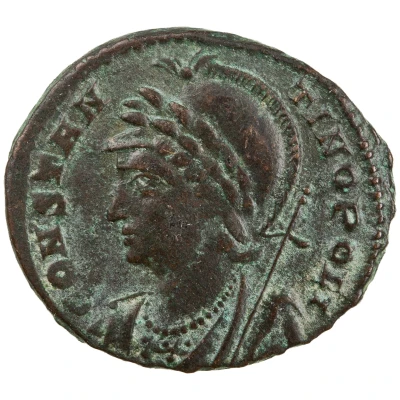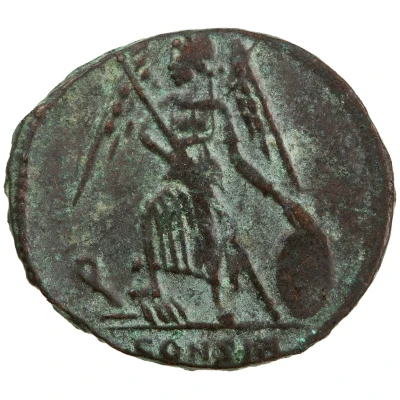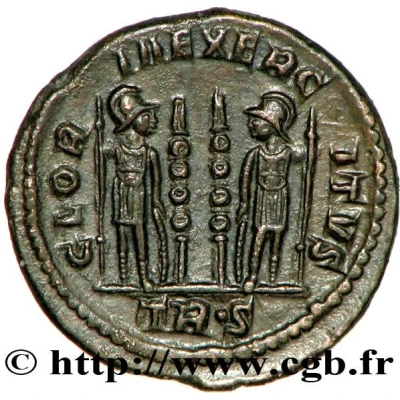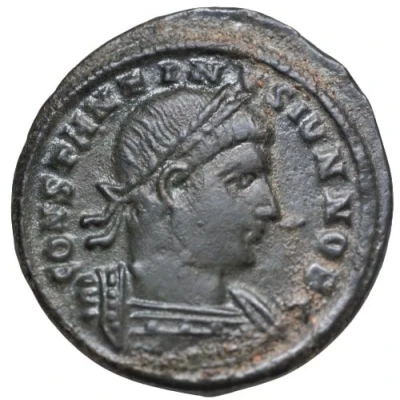
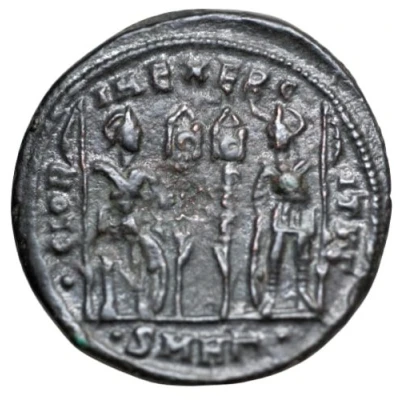

Follis - Constantinus II GLORIA EXERCITVS; Heraclea
| Bronze | 2.77 g | 19.5 mm |
| Issuer | Rome › Roman Empire (27 BC - 395 AD) |
|---|---|
| Emperor | Constantine II (337-340) |
| Type | Standard circulation coin |
| Years | 330-333 |
| Value | Follis (1⁄180) |
| Currency | Solidus, Reform of Constantine (AD 310/324 – 395) |
| Composition | Bronze |
| Weight | 2.77 g |
| Diameter | 19.5 mm |
| Shape | Round (irregular) |
| Technique | Hammered |
| Orientation | Medal alignment ↑↑ |
| Demonetized | Yes |
| Updated | 2024-10-04 |
| Numista | N#325477 |
|---|---|
| Rarity index | 90% |
Reverse
Two soldiers standing facing each other, each holding a spear in outer hand and resting inner hand on shield set on ground; two standards between them; a dot in left field.
Mintmark in exergue.
Scripts: Latin, Greek
Lettering:
· GLORIA EXERCITVS
· SMHΓ ·
Translation: To the glory of the army
Interesting fact
The Follis coinage was the first Roman coinage to feature a Christian symbol, the Chi-Rho monogram, which was introduced by Emperor Constantine the Great in the early 4th century. This symbol, which combines the first two letters of the Greek word for Christ (Χριστός), was used on the coins of Constantine and his successors and became a defining feature of Christian Roman coins.
